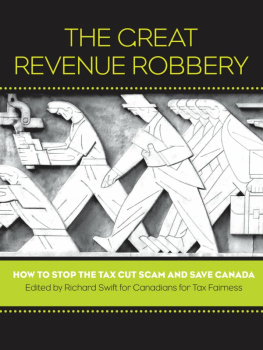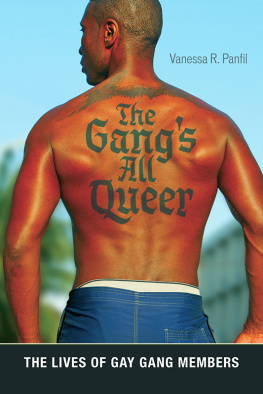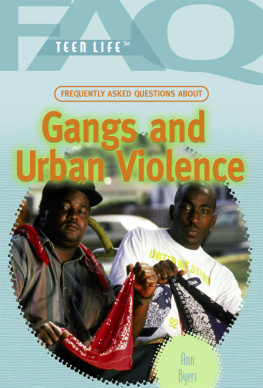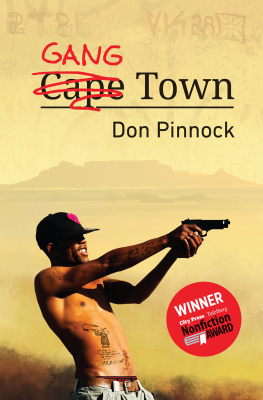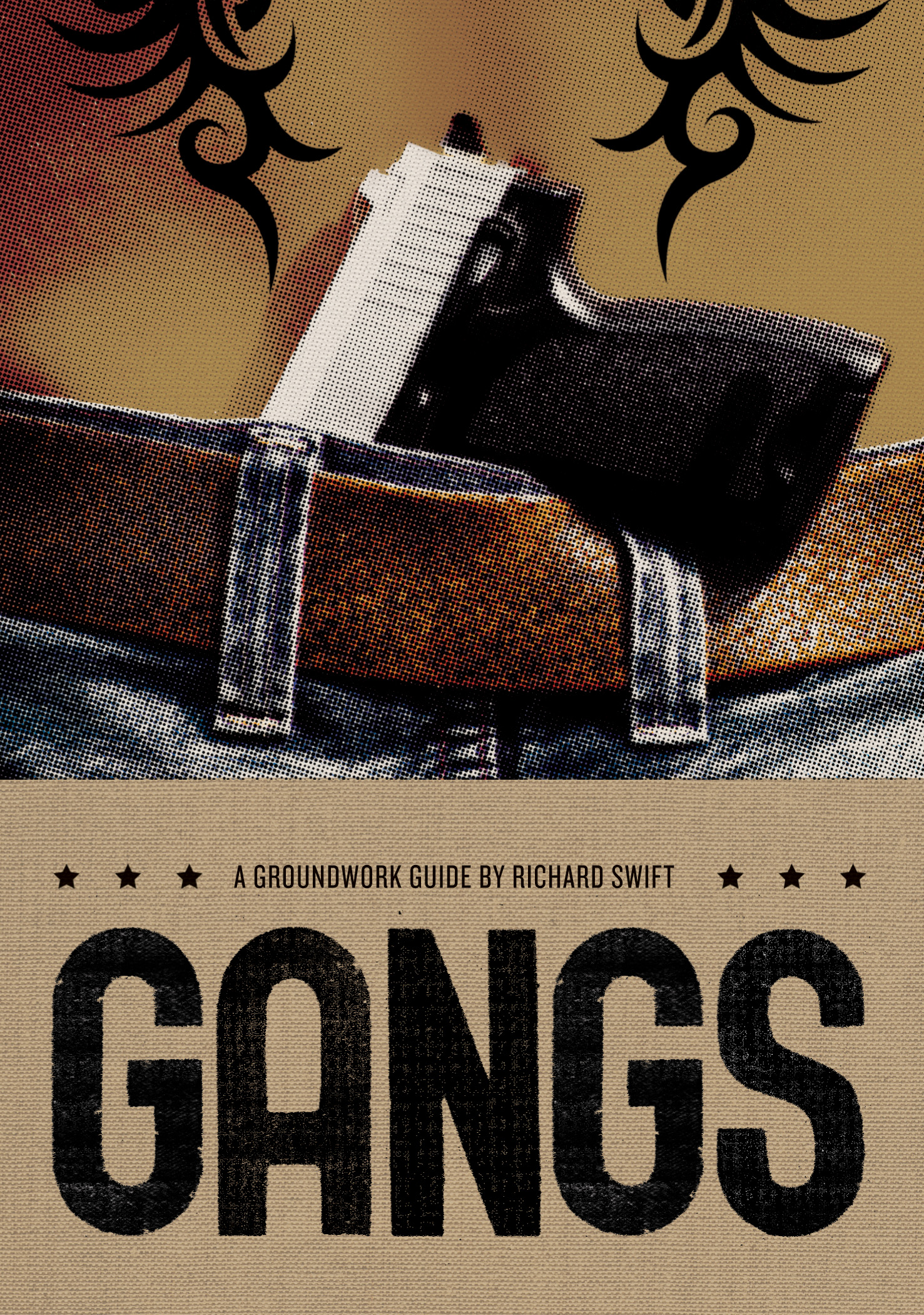
Slavery Today
Kevin Bales & Becky Cornell
The Betrayal of Africa
Gerald Caplan
Sex for Guys
Manne Forssberg
Technology
Wayne Grady
Hip Hop World
Dalton Higgins
Democracy
James Laxer
Empire
James Laxer
Oil
James Laxer
Cities
John Lorinc
Pornography
Debbie Nathan
Being Muslim
Haroon Siddiqui
Genocide
Jane Springer
The News
Peter Steven
Gangs
Richard Swift
Climate Change
Shelley Tanaka
The Force of Law
Mariana Valverde
Series Editor
Jane Springer
Gangs Richard Swift | Groundwood Books House of Anansi Press | Toronto Berkeley |
Copyright 2011 by Richard Swift
Published in Canada and the USA in 2011 by Groundwood Books
All rights reserved. No part of this publication may be reproduced, stored in a etrieval system or transmitted, in any form or by any means, without the prior written consent of the publisher or a license from The Canadian Copyright Licensing Agency (Access Copyright). For an Access Copyright license, visit www.accesscopyright.ca or call toll free to 1-800-893-5777.
Groundwood Books / House of Anansi Press
128 Sterling Road, Lower Level, Toronto, Ontario M6R 2B7
or c/o Publishers Group West
1700 Fourth Street, Berkeley, CA 94710
We acknowledge for their nancial support of our publishing program the Canada Council for the Arts, the Government of Canada through the Canada Book Fund (CBF) and the Ontario Arts Council.
This book was written with the support of an Ontario Arts Council Writers
Reserve Grant.
Library and Archives Canada Cataloguing in Publication
Swift, Richard
Gangs / Richard Swift.
(Groundwork guides)
ISBN 978-0-88899-979-5 (bound).--ISBN 978-0-88899-978-8 (pbk.)
1. Gangs. 2. Crime prevention. I. Title. II. Series: Groundwork guides
HV6437.S84 2011 364.1066 C2010-905904-2
Design by Michael Solomon
Index by Gillian Watts
Contents
To Joshua far too skeptical to ever join a gang.
Chapter 1
Gangs Are Everywhere
Almost everyone has their weapons, and when you go out into the street you never know if youre going to return, whats going to happen to you, when theyre going to assault you. You dont have security we dont live in peace There have only been deaths.Maria, aged 20, Guatemala City
Politicians. Police. Teachers. The media. Social workers. The elderly. Solid citizens everywhere. Everyone these days is alarmed about youth gangs. Next to terrorists, gangs are the number two other a manifestation of pure evil. The media is filled with stories about youth in gangs drug-dealing, terrorizing neighborhoods, gunning down each other as well as a growing number of bystanders. In the Paris banlieues (suburbs) they set cars alight, in downtown Toronto they open up with handguns on the subway cars or in crowded downtown streets, in Birmingham and Warsaw they rampage after football matches, and in many parts of the world they turn entire urban areas into no-go zones for the police.
Throughout burgeoning slums of the urban Global South, in cities as far apart as Rio de Janeiro in Brazil and Nairobi in Kenya, gangs of young men and sometimes women are the most important form of social organization in young peoples lives. They have come to replace the religious institutions that play such a large role in the lives of their parents and grandparents. And as the Global South rapidly shifts its population from the slow, predictable rhythms of rural life to the volatile speed-up of urban life, gangs and their impact are only likely to grow.
For the young, in particular, gangs provide moorings in a world set adrift. The city appears dangerous and exciting but also a rupture from the old certainties of parents and grandparents. Traditional families under pressure of a new kind of confusing urban poverty often end up neglecting or abusing children, driving them out into the street in search of opportunity and companionship. The old ways and customs of respect and belief no longer seem to apply, and youth gangs provide both a social rooting and a sense of identity for young people torn between their dreams and the stark realities of the poverty that hems them in. The economic possibilities provided by gang life (mostly but not all criminal) are a crucial factor in what draws the young into gangs. And economics is behind the persistence of those gangs as a part of the social landscape in the slums of both the Global South and the Global North.
Whats in a Name?
What outsiders call these gangs or what the gangs call themselves varies from place to place. In Latin America they are known as pandillas, maras, bandas, galeras, quadrillas, baras and chapulines . In Jamaica they are known as posses, dating back to the 1970s when Bonanza TV show reruns hit Caribbean television.
What the gangs call themselves reveals how they view the world and their place in it. Gang names dot newspaper columns as well as police blotters and court charge sheets. In countries like East Timor, plagued by youth gang violence since the countrys independence from Indonesia, they go by names like Devoted Heart Lotus Brotherhood and Sagrada Famlia (holy family). In So Lus, capital of the northeastern Brazilian state of Maranho, youth gangs call themselves Messengers from Hell, Mind Organizers, Terrible Nocturnals and Falta de Deus (absence of God).
Gang names serve a number of purposes to strike fear in the hearts of outsiders or competitors, but also to establish an outcast identity and to promote internal loyalty. For example, Amigos dos Amigos (ADA, meaning friends of friends), which controls Roinha, the largest favela (slum) in Rio de Janeiro, speaks to group solidarity.
Many gangs have names with religious echoes. They sometimes evoke a rejection of God but more often use terms like disciples, which suggest a longing for certainties in an uncertain world. Others like Falta de Deus speak of a lack of religion or even abandonment by God.
The massive gang-ridden Cape Flats slum near the South African city of Cape Town is home to an estimated 130 different gangs, including the Hard Livings, the Mongrels and the Junky Funky Boys.
The biggest of the Cape Flats gangs is called the Americans, evoking not just the power of US gangs, but the cultural domination of the powerful US film and music industries. A gang in the US city of Cincinnati called the Northside Taliban has its own rap song on YouTube. There is even a website, In Germany and Russia gangs tend to cluster around anti-foreigner activity. One Russian gang calling itself the White Inquisitors Crew has a record of attacking Chinese, Uzbek and other groupings from the east of the country. Skinhead gangs tend toward names that promote a Nazi revival, while some German gangs like the Pomeranian Homeland Association maintain innocuous names to hide their neo-Nazi inclinations.
Youth Gang Explosion
There are many types of gangs, ranging from sophisticated international criminal cartels to the famous motorcycle gangs like the Hells Angels or the Satans Choice that prowl on North American highways. But this book concentrates on the youth gangs that number in the tens of thousands and are present in a growing number of cities around the world.


